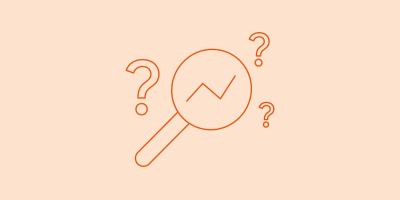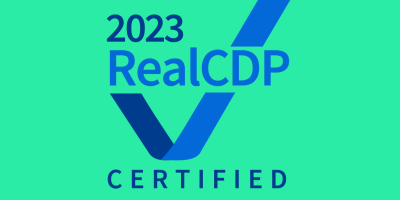Using Customer Data Analytics to Improve CX
Collection :
The digital journey customers take to complete a purchase has become increasingly complex as technology progresses. The job brands have to personalize and adapt those customer journeys to changing needs is just as complex and undeniably crucial to a successful business. The key? Using customer data the right way.
While the sheer volume of customer data points is growing, so, too, are the ways that organizations can harness that data to give people customer experiences that inspire sales. But, a vast sea of data needs to first be tamed before marketers can make use of it.
This is where customer data analytics plays an important role.
What is customer data analytics?
Customer data analytics is how an organization collects, organizes, and analyzes customer data to learn customer behavior patterns. Organizations will use the gathered insights to better understand how their customers operate in order to serve more relevant marketing campaigns, personalized content, and attractive experiences.
Why do this? Because it’s good business. In a McKinsey & Company Survey, 71% of consumers reported that they expect personalization and 76% are frustrated when they don’t receive it.
Customers likely won’t even know personalization is happening, but when you’ve spent the time crafting data-informed digital experiences unique to your customers, it’ll show up on your bottom line. Outdoor gear supplier Moosejaw recognized this and harnessed customer data to personalize their content and increased conversion rates by 125%.
Customer data analytics is the first step to delivering experiences that make individual customers feel special.
Types of customer data analytics
Different types of customer data analytics help organizations do different things. But, first, you have to know what to look for. These are four common types.
- Descriptive: Digging into past or current events across your business, descriptive analytics looks at customer data to determine what your customers are doing. We use descriptive analytics to discover what’s happening or what happened. This is how a business identifies customer behavior trends for reporting and strategizing.
- Diagnostic: We’ve moved onto the “why?” of customer data analytics. If there’s an ongoing problem, it’s time to dig into the data to determine why that problem exists or persists. Diagnostic customer data analytics identifies the root of business problems.
- Prescriptive: The “what’s next?” of customer data analytics uses data to determine the next best business move. For example, last quarter you saw the number of abandoned shopping carts drop after offering those customers a discount code. If you see abandoned carts rise again, you know from past data that a little gift is all the boost you need to fix it.
- Predictive: Who needs a crystal ball when you’ve got good data? Predictive customer data analytics makes business-oriented forecasts, like predicting how many new customers you can acquire by starting a referral program with current customers.
These different types of customer data analytics will ultimately be used in tandem in order to have an ongoing positive effect on customer experience. As data flows and customer behaviors change, organizations must adapt, iterate, and evolve to follow suit.
Starting with descriptive, a business first needs to understand customer data trends, from which it can create customer segments. If those trends are good, amazing. If they’re not what you’re looking for, drill down into the customer data to diagnose possible reasons behind those negative trends. Prescriptive and predictive analytics then look to the future and attempt to rectify problematic trends and iterate to improve upon current successes. The cycle of using customer data analytics is ongoing to reflect fluctuations in business goals, customer behavior, and good old fashioned human variability. But, you’ve got the tools at hand to adapt accordingly.
How to use data to improve customer experiences
We’ve covered that customer data analytics is important, but now it’s time to execute. Translating data into better customer experiences takes a little work. Fortunately, there are tools and strategies to ease the process.
Collecting
First things first, you have to collect customer data. But, not all of it. That would be a massive undertaking and, frankly, unnecessary. From email automation software, CRMs, social media reporting tools, and on, the amount of customer data a business collects is vast. The point is: you don’t need all of it. Based on your business goals, tap into the customer data types that will help you achieve those goals. Once you’ve got those data types mapped out, look into the channels those data would come from.
Storing and organizing
Collecting data is one thing, but storing and organizing it are the differences between data chaos and data clarity. There are all sorts of customer data solutions out there: data lakes, data warehouses, master data management (MDM) solutions, and customer data platforms. However you go about organizing your data is important to using it effectively.
Where all of the aforementioned solutions work well for collecting and storing data, a few of them leave something to be desired in terms of data organization, and it can be difficult to extract actionable insights without a heavy lift. However, a customer data platform (CDP) is a great tool for collecting, storing, and organizing. The CDP game-changer is a unified customer view. Gathering all data points from a customer and putting together a 360° view of that customer gives you the option to holistically look at each individual customer.
Analyzing
Another place a CDP helps is analyzing data. If you have customer data spread around disparate systems like those mentioned above, it can be more difficult to rein it in. A CDP holds water by consolidating all that data in a single source, making it easier for marketers to glean insights and act on it. How? A little bit of a boost from modern technology.
Think about having thousands of 360° customer views — they’re not exactly helpful without some analytical power to help you sift through it. With a good CDP, marketers can search for segments they want to target or use machine learning models to parse through customer records to identify clusters to inform future marketing campaigns. The point is, you don’t have to do the heavy lifting in data analysis and you’ll have actionable information to work from faster.
A CDP does data best
The right tools will help your organization thrive with customer data analytics. There are heaps of tools out there — including one actually called Heap — that will help you wrangle your customer data, but we’re partial to a customer data platform.
Not only does a CDP act as a central command center for all your customer data, it has the power to organize and analyze it. One of the biggest hurdles businesses face is disconnected customer data. When disparate systems collect customer data and that data isn’t shared centrally, organization becomes a much more arduous task.
A good CDP connects these systems and integrates data from all of them in one place. From there, you’re able to execute identity resolution, customer data analytics, machine learning models, data sharing, cohort analyses, and more.
Put plainly, a CDP covers every aspect of customer data analytics this article has touched on – and then some.
Where to go from here
The better you know your customers, the better able you are to continuously improve their experiences. It starts with getting a handle on customer data. If you’re looking for a customer data analytics platform that speaks for itself, we’d love to show you Acquia CDP — where customer data is at the center of building better customer experiences.



